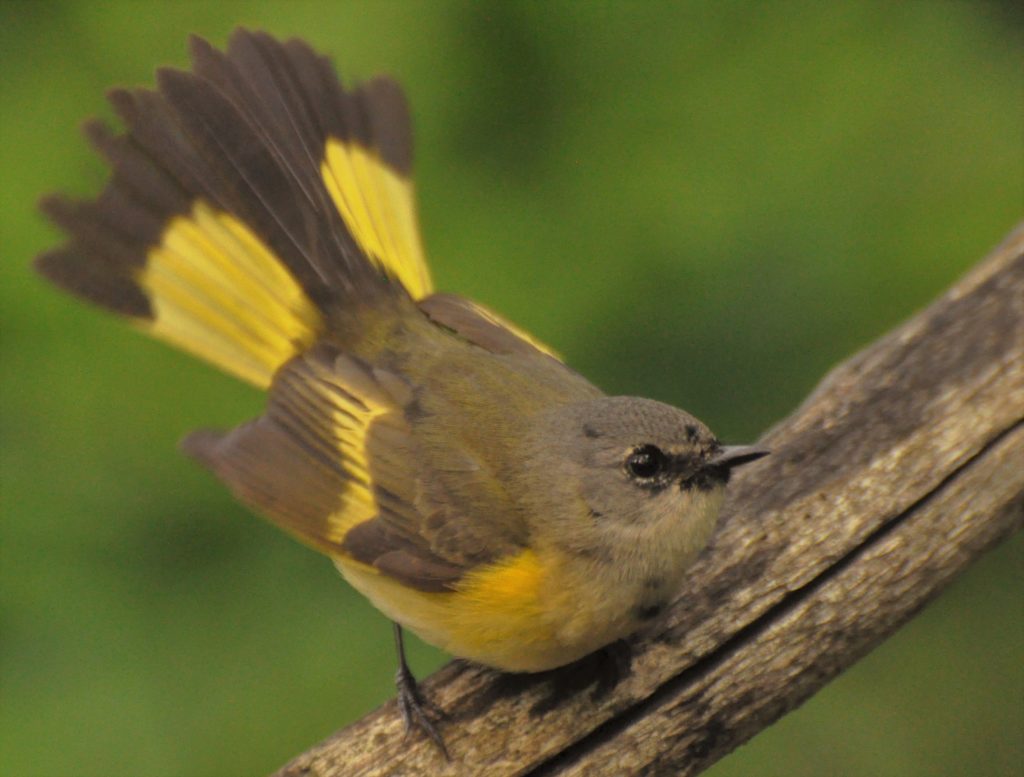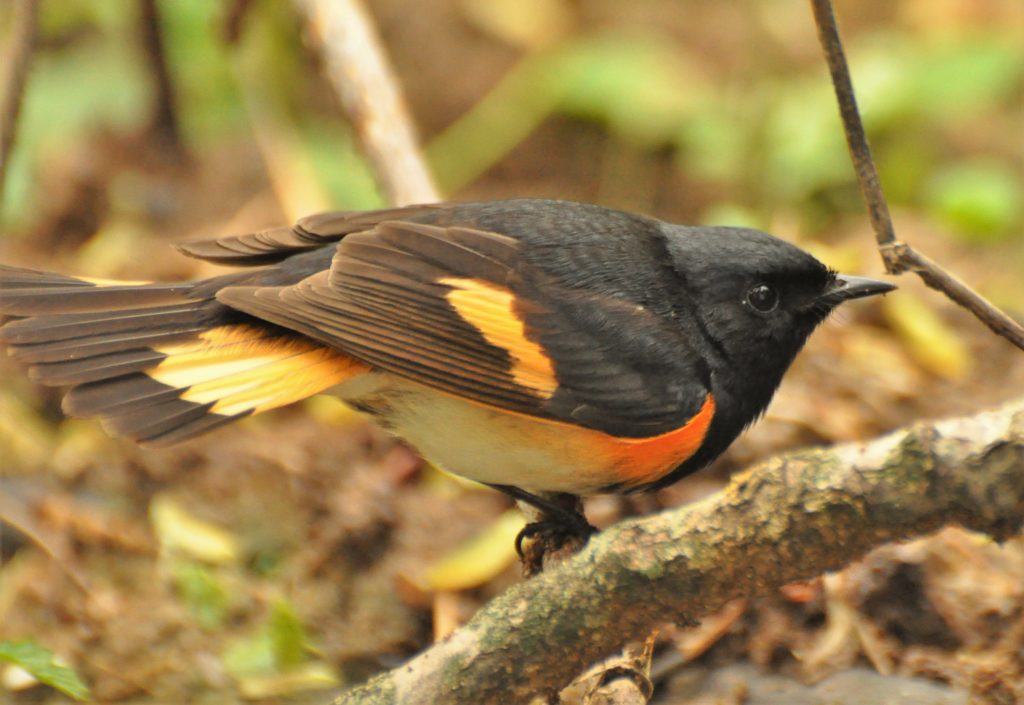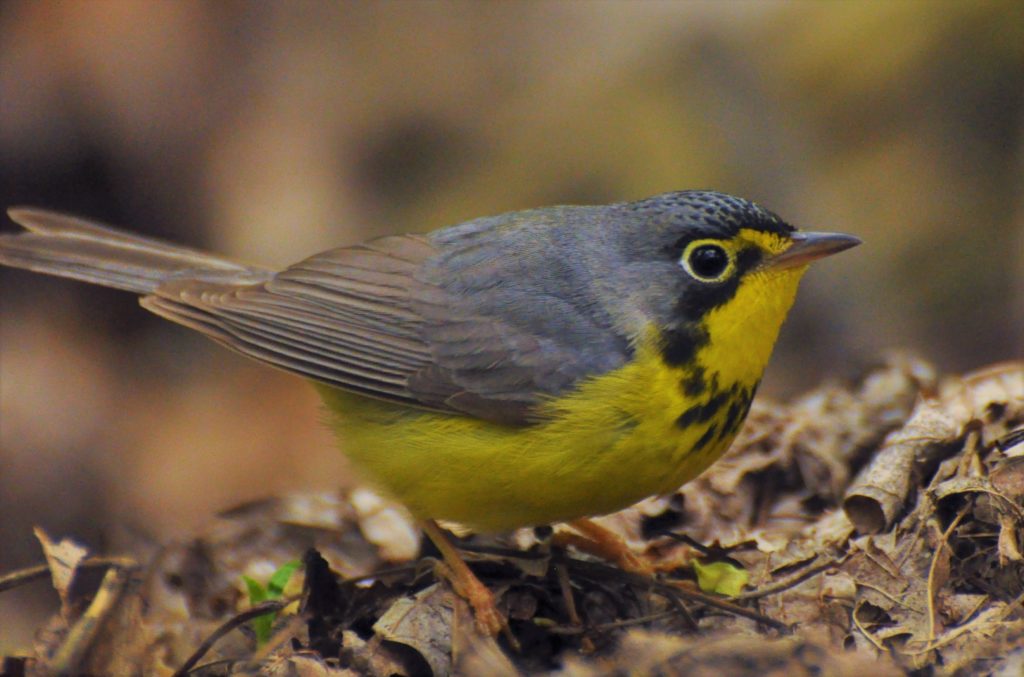Photography courtesy of Lowell Washburn, all rights reserved.
Of all the warblers migrating through Iowa, the energetic American redstart is perhaps the easiest to identify. With its coal black head and back, burnt orange wing and tail patches, and white underbelly; an adult male is hard to mistake for anything else – although the orange and black plumage does occasionally lead people to mistake it for the more sluggish and much larger Baltimore oriole.
Like most wood warblers, redstarts feed almost exclusively on insects. When compared to other species, they can only be described as hyper-hyperactive. If I could think of a stronger description, I’d use it. No warbler is more active in its pursuit of food.
Although redstarts may pluck sedentary insects from leafy foliage, much of their food is caught on the fly. When nothing is flying, they employ an amazing tactic to make things happen. Moving to likely looking cover, the little warbler boldly flashes its colorful wing and tail patches. The rapid movement display effectively startles nearby insects into making a fatal move. The species’ uncanny ability to make food appear is amazingly resourceful.

Redstarts inhabit moist deciduous woodlands and are often found near wooded streams or ponds. Upon discovering a major hatch of midges, or other insects, these hyper warblers will often launch a full-blown feeding frenzy with multiple birds continually jumping into the air to seize one tiny victim after another. The nonstop activity does not go unnoticed as the commotion attracts more and more birds to the feast.
Earlier this week, I stumbled unto just such an event. It was late afternoon and a large hatch of [unidentified] gnat-sized insects were emerging from the puddles of a forested low spot. Attracted to the spot by the constant flash of feeding birds, I had soon taken a ring side seat at the edge of where the most food seemed to be hatching and taking wing. Although only a handful of redstarts were present when I first arrived, the numbers quickly grew until I surrounded by a dizzying number of hysterically foraging birds. Completely focused on the windfall food source, the normally shy birds largely ignored my presence with many feeding within a foot or two of where I sat. It was an amazing sight.
Picking an individual bird, I tried timing the frequency of its flights. The activity was constant, and there was rarely more than a two-second delay between catches. Most birds were feeding from the ground and the flights only took them a couple of feet into the air. Their efficiency was incredible. The redstart I was timing even caught a few passing insects [midges?] by merely standing on its tip toes and snapping them up as they flew by.

I sat with the redstarts for two hours. When I finally left, the number of birds and the intensity of their frenzy had not abated. Although I saw other warbler and flycatcher species nearby, none had attempted to join the ongoing banquet. The hatch was apparently a “Redstart Only” event. The only exception was a single Canada warbler that came in, caught one insect on the ground, and then left.

When I returned the next morning, I only encountered one redstart in more than a half hour of searching. At least for this remarkable event, I appear to have been in the right place at the right time.

 Susan Judkins Josten
Susan Judkins Josten Rudi Roeslein
Rudi Roeslein Elyssa McFarland
Elyssa McFarland Mark Langgin
Mark Langgin Adam Janke
Adam Janke Joe Henry
Joe Henry Sue Wilkinson
Sue Wilkinson Tom Cope
Tom Cope Kristin Ashenbrenner
Kristin Ashenbrenner Joe Wilkinson
Joe Wilkinson Dr. Tammy Mildenstein
Dr. Tammy Mildenstein Sean McMahon
Sean McMahon